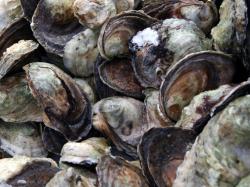Washington State: Recall Issued For Oysters Harvested From Hood Canal
September 27, 2011 | 2 min to read

OLYMPIA – Distributors, retailers, restaurants, and consumers have been advised not to eat, sell, or ship oysters harvested between August 30 and September 19 from Washington’s Hood Canal growing area #4. The shellfish growing area called “Hood Canal 4” covers both east and west shorelines of Hood Canal between the Duckabush River and the Hamma Hamma River. There are oyster harvest sites on both shorelines. The growing area is located in Mason, Jefferson, and Kitsap counties.
The state Department of Health made the recommendations, including contacting people who bought the oysters over the Internet, as part of a recall of oysters in the shell harvested in that growing area between those dates.
The agency closed oyster harvesting in the area after five people who ate raw oysters containing Vibrio parahaemolyticus, got sick with an illness called vibriosis.
The recall is a precautionary action to make sure that no oysters in the shell harvested from Hood Canal #4, in this time period, are still for sale or in the hands of consumers. State health officials order a recall when two or more unrelated cases of vibriosis are linked to the same source of oysters from the growing area. There have been several other vibriosis cases reported this summer, scattered around the state’s growing areas. Typically, Washington sees about 50 cases of vibriosis a year.
Vibrio parahaemolyticus bacteria are found naturally in the environment. When water temperature rises, the bacteria can quickly grow to a level that causes illness.
Symptoms of vibriosis include diarrhea, abdominal cramps, nausea, vomiting, headache, fever, and chills. The symptoms usually appear about 12 hours after eating infected shellfish, but they can begin within two hours or as late as 48 hours after consumption. The illness is usually moderate and lasts for two to seven days; however, it can be more serious, even life threatening to people with weak immune systems or chronic liver disease. Taking certain medications may make vibriosis more likely to occur after eating shellfish.
Harvested shellfish should be kept cool. Thorough cooking kills the bacteria, making the shellfish safe to eat. Food safety specialists recommend oysters be cooked to an internal temperature of 145° F to kill the bacteria.
More information, including maps of the affected areas, is available on the agency’s shellfish safety website (http://www.doh.wa.gov/ehp/sf/default-sf.htm). It’s important to remember that just because an area doesn’t appear to be closed because of Vibrio parahaemolyticus, it may be closed for marine biotoxins.
Check our biotoxin Web page (http://ww4.doh.wa.gov/gis/mogifs/biotoxin.htm) to make sure an area you wish to harvest in is free from marine biotoxins.
The Department of Health website (www.doh.wa.gov) is your source for a healthy dose of information. Also, find us on Facebook and follow us on Twitter.
Source: Washington State Department of Health
